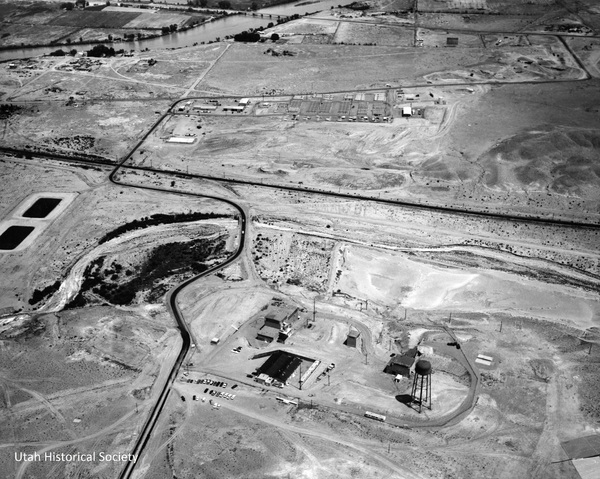Dublin Core
Title
Description
While the federal government has long had a military presence in the West, the scale and scope of its impact on the rural West increased exponentially during World War II. The aridity and isolation that made so much of the region daunting for agriculture made it perfect for military uses. These included developing and testing aircraft, deadly biological agents, and other weapon systems. While the military’s presence caused some communities to urbanize, it helped others retain their rural character.
In some places, wartime industrialization changed the use of rural land forever. Thousands of acres of prime farmlands and orchards transformed seemingly overnight into new factories, military bases, and institutions. In south Salt Lake County, for example, 5,000 acres of farmland became the Kearns Army Air Base. The facility served as a training camp for Air Corps personnel until 1948, when 1,200 acres of the base were sold at auction and the city of Kearns was born.
In more remote places, the military established some of its largest and most secretive facilities. Wendover Air Base, established in 1940 on the Nevada border, became a training ground for thousands of bomber crews when the US entered the war. Portions of its massive bombing range later became part of the Utah Test and Training Range, the largest contiguous area of restricted supersonic airspace in the United States. The continued vitality of Hill Air Force Base, long one of Utah’s largest employers, is due in part to the vast area west of Great Salt Lake used for supersonic training and testing.
For some sites, the military spending that reshaped rural communities across Utah was short lived. The Air Force came to Green River in 1964, when it opened the Utah Launch Complex, a remote installation of New Mexico’s White Sands Missile Range. For the next eleven years, Athena and Pershing missiles were fired toward their targets in New Mexico. When launch testing moved to a base closer to White Sands, the Green River facility closed down, taking jobs and income with it. Like many other industries in Utah, the presence of the military often followed a boom and bust cycle.
Creator
Source
_______________
See Gregory E. Smoak, Nate Housley, and Megan Weiss, Rural Utah at a Crossroads(Salt Lake City: Utah Humanities, 2023); Leonard J. Arrington and Thomas G. Alexander, “Sentinels on the Desert: The Dugway Proving Ground (1942-1963) and Deseret Chemical Depot (1942-1955),” Utah Historical Quarterly 32 no 1 (1964): 32-43; Thomas G. Alexander, “Brief Histories of Three Federal Military Installations in Utah: Kearns Army Air Base, Hurricane Mesa, and Green River Test Complex,” Utah Historical Quarterly 34 (1966): 124-26.

